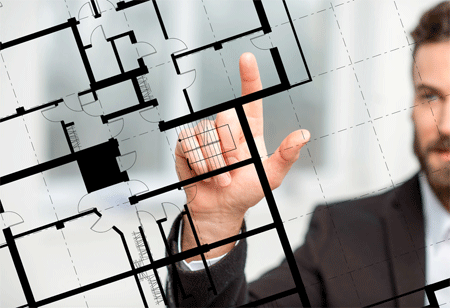What exactly is the distinction between urban design and urban planning? And why is it significant?Try looking around your neighborhood if you live in a city. Building facades, laneways, street corners, pedestrian crossings, green open spaces, and so on are all examples of urban design.These individual elements combine to form a gestalt known as the urbanscape, The city's spatial layout or appearance as perceived by our eyes. We then form a mental image of the city based on what we see and form an opinion about it.
Urban design is how we alter the physical form of an urban area, with the intention of improving both its physical and non-physical elements. Although changing a city's physical form is the primary focus of urban design, it is not the only one. Designing an urban landscape is a complex process that goes beyond its physical appearance. As with all forms of art, urban design has an impact on things that are invisible to the eye and impossible to grasp with the hand.
For example, when we’re designing the physical form of a street, we have to consider many physical and non-physical factors, such as ,The layout of the street network, Volume and frequency of traffic, Surrounding land-use (housing/commercial/natural reserve?), Demographics of the local population (age, gender, race, socioeconomic status, and more). Or environmental implications (pollution, water catchment, and more). Changing the appearance of the street will have an impact on all of these factors, so we must think about them carefully. After all, an aesthetically pleasing street is useless if it cannot accommodate the flow of traffic and support the overall function of the neighborhood.
What Distinguishes Urban Design from Urban Planning? The terms ‘urban design’ and ‘urban planning’ are frequently confused because they both contain the word "urban" in their names. Since these two fields of study are so closely related, it can be difficult to distinguish between them at first glance.
To explain with some examples, urban planning is more about policies, regulations, and strategies. Think social, cultural, environmental, and economic aspects being translated into city master plans, development plans, and other policy documents. Meanwhile, urban design is more about form and function. Think about walkability, transit systems, architectural landscape, and other urban features being translated into design guidelines, spatial layouts, and 3D models.
As you can see, it appears as though we are looking at the same object through various lenses. Urban planning and urban design have nearly identical fields of study; however, they approach issues from different angles.
-
Designing an urban landscape is a complex process that goes beyond its physical appearance. As with all forms of art, urban design has an impact on things that are invisible to the eye and impossible to grasp with the hand
Asia Business outlook Team
We could possibly describe urban design as a combination of planning and architecture. More specifically, it involves architectural design with strategic components and planning with aesthetic consideration. Due to the overlap in their fields of expertise, many urban designers also hold degrees in architecture or urban planning.
Why does it Matter? Your quality of life can be made or broken by urban design. If you think this is a stretch, consider this: Would you rather see green parks and lively pedestrian areas in your neighborhood or loud, congested, air-polluting traffic? And if you still believe you can manage the latter occasionally, consider managing it continuously for years.
Urban planning is a force of compound interest, just like almost everything else in life. Little by little, day by day, its effects build up until, before you know it, a mountain has formed. The good news is that we can choose the type of mountain we want to create and arrange our stacks accordingly.
Let’s Work Together to Make the World A Better Place While there is historical evidence of planned and designed cities in ancient civilizations, modern urban design has only existed since the mid-twentieth century. As a result, it is a relatively new discipline. Every day, new urban design concepts and paradigms emerge. The goal is to promote more resilient, sustainable, and humanistic urban development. Walkability, inclusivity, efficient transit systems, environmental friendliness, and technology integration are becoming increasingly important among urban designers.
Final Thoughts Urban design has enormous potential to assist us in addressing these issues and, in the end, creating better cities and communities. Urban design, when viewed on a smaller scale and in a shorter time frame, produces better people. It creates a better world when viewed over a broader and longer time frame.
